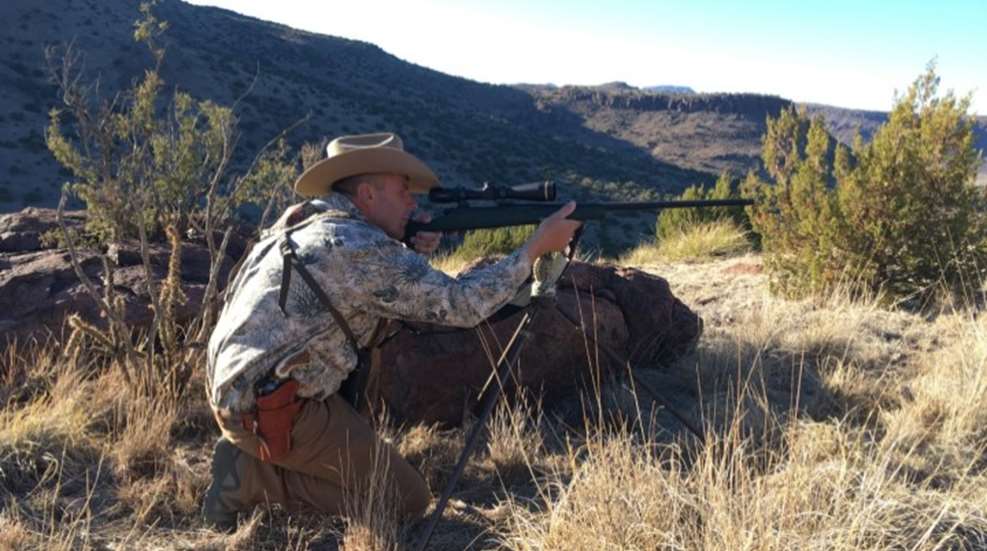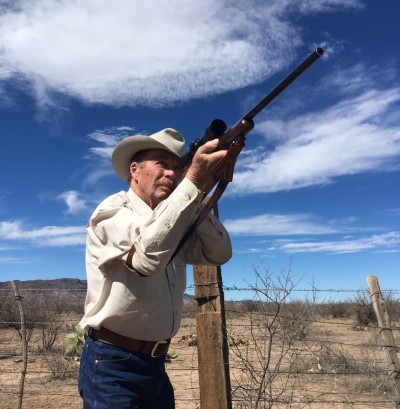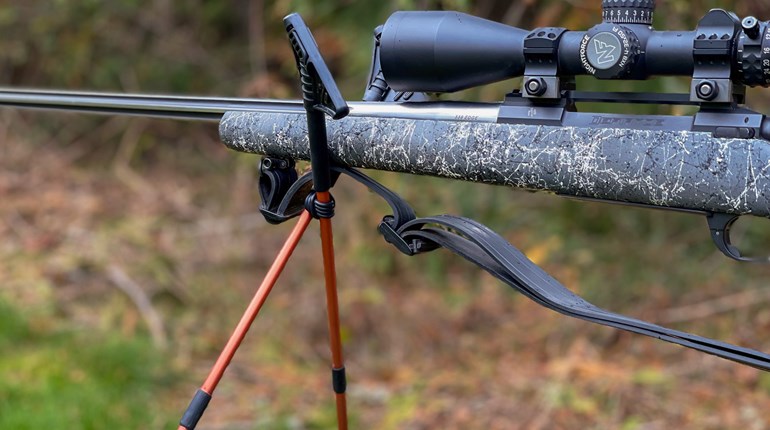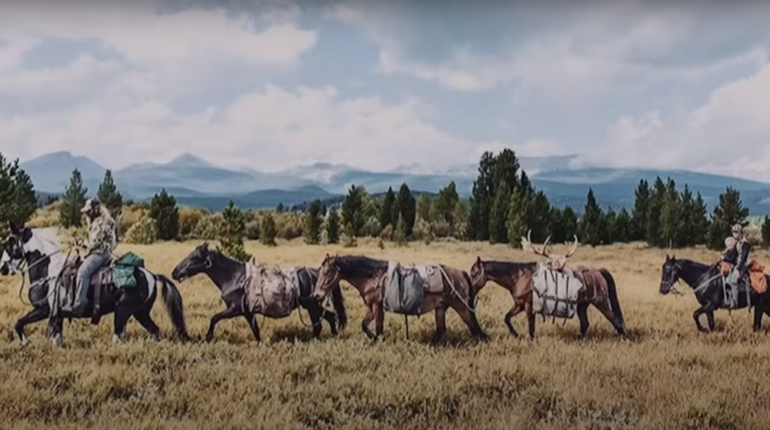
As hunters, we owe it to the wild game, our fellow sportsmen and ourselves to make every effort for a one-shot, quick kill on the animals we harvest. A solid shooting rest is one of the most important factors in achieving clean kills on game. Shooting nice, tiny groups off the concrete bench with our rifle snuggled tightly in sandbags is great for revealing the inherent accuracy of the outfit. Slapping steel from the same bench at 700 yards is fun and impressive, but doing these things in the field is an entirely different story for most of us.
When we are hunting, we must often make the important shot after hiking up a desert mountain for that old ram or big mule deer buck, crawling on our hands and knees under dense mesquite brush to get closer to a wily whitetail, or jogging to a clearing in the aspen timber for a chance at a bull elk. There ain’t any shooting benches or sandbags in those places! We hunters, being an innovative bunch, have developed ways of getting a good, improvised shooting rests in the field. Let’s take a look at five ways to do it.
1. Shooting Sticks
There are a variety of shooting sticks on the market; some are cheap, some expensive. No matter which one you choose, they can be worth much more than their weight in gold when an opportunity at a trophy presents itself. The first ones I used many years ago were for shooting from the sitting or kneeling positions. They are handy, but I discovered I could not always sit or kneel, so I made some by tying two dead sotol stalks together to incorporate shooting while standing. In Africa I used the PH’s homemade three-legged, tall sticks to good effect. My oldest daughter used the short tripod Gen 3 Primos Trigger Stick (that my buddy Jase Harkins insisted I take along), and collected a big Kudu bull. The past couple years I have been using a tall version of those sticks and have been very pleased with them.
2. Sling It
A good shooting sling can greatly help in taming the “wandering crosshairs.” On rifles, I have experimented with Galco’s good Safari Ching Sling and the Peabody Sling from Barranti Leather Company. Both allow for the support arm to be run through the sling, where it pulls downward tension on the front forearm of the rifle, locking the butt into your shoulder. A “Hasty Sling” technique is another option for a standard rifle sling. For hand-gunners, Doc Barranti also makes the Sixshot Sling, which is well worth a look.
Backpack, Coat or Hat
A backpack can make a great rest, and the larger, framed packs can make a really solid platform, especially if you have a hunting partner who will loan you theirs to help support your strong-side elbow (or a combination shooting sticks/backpack rest). In a pinch, a rolled-up coat or vest on top of a rock or log can get the job done. Recently my wife and I stalked a group of 40 aoudad that were making their way through a juniper thicket along a rocky arroyo. We picked a big boulder for her rifle rest. She courageously knelt on small, jagged rocks (yoga pants probably aren’t the best thing to wear on a hunt) while I positioned my pack for a rest. Too tall. The herd was on the go and we had little time, so we borrowed a lesson learned from the late gun writer, Bob Milek. She used my felt hat as the rest!
Mother Nature
Mother Nature can provide some steady rests, depending where and what you are hunting. In far west Texas, where I live and hunt, I prefer to bring my own with me and use Ma Nature’s if it’s available. Sometimes combining a natural rest, like a boulder under the strong-arm elbow while the rifle is rested on the sticks, is a great option. This makes a very solid shooting position. If you are hunting in timber and can use the standing trees or the blowdowns, all the better. Speaking of combining nature and accoutrements to make a rest, my friend Richard Mann describes how he used his knife as a rest to take a fine bear in his latest book, Under Orion Volume 2.
Shooting Positions
Standing, kneeling, sitting and prone. There are times when a hunter will simply not have time or the opportunity for a rest. If the shot is to be made, it will require proficiency to pull it off. I totally blew a close shot on a good aoudad ram once because I was not confident in making a quick, off-hand, standing shot. Had I been practicing shooting on my two legs, as I do now, I would have had the self-assurance I needed that day. All of these positions can be fast and steady enough, if you put in the time and ammunition at the range. Instead of other objects we are using our muscles, bones, and mental concentration as our rests. (To get the skinny on how to assume these positions to make a rock-solid rest of your own skeleton, click here.)
No matter which improvised rest you use, or combinations thereof, you must practice in order to smoothly transition to them in the field, and sometimes use a little imagination!






































